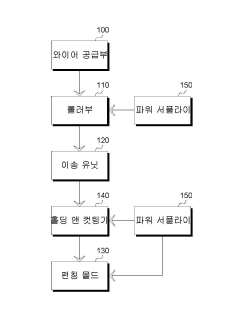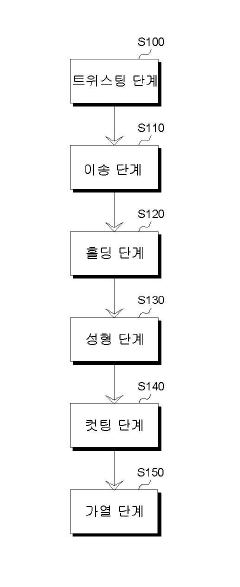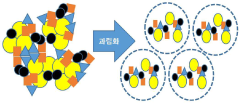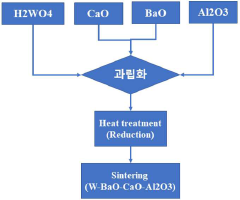How To Improve Tungsten Filament Manufacturing?
Tungsten Filament Evolution and Objectives
Tungsten filament manufacturing has undergone significant evolution since its inception in the early 20th century. Initially used in incandescent light bulbs, tungsten filaments have found applications in various industries due to their high melting point and excellent electrical conductivity. The development of tungsten filament technology has been driven by the need for improved efficiency, durability, and performance in lighting and electronic applications.
The historical progression of tungsten filament manufacturing began with the use of drawn wire techniques, which were later refined to produce finer and more uniform filaments. Subsequent advancements included the introduction of doping processes to enhance the filament's mechanical properties and reduce grain growth during operation. The advent of powder metallurgy techniques in the mid-20th century revolutionized tungsten filament production, allowing for greater control over the material's microstructure and properties.
In recent years, the focus has shifted towards developing more energy-efficient and environmentally friendly alternatives to traditional incandescent lighting. This has led to a decline in the use of tungsten filaments in general lighting applications. However, the demand for high-quality tungsten filaments in specialized fields such as electron microscopy, X-ray tubes, and high-temperature furnaces has continued to drive innovation in manufacturing processes.
The primary objectives for improving tungsten filament manufacturing are centered around enhancing product quality, increasing production efficiency, and reducing environmental impact. Key goals include developing methods to produce filaments with more uniform grain structure, improved ductility, and higher resistance to sag and deformation at elevated temperatures. Additionally, there is a strong emphasis on optimizing the production process to minimize material waste, reduce energy consumption, and lower manufacturing costs.
Another critical objective is to explore novel manufacturing techniques that can yield tungsten filaments with superior performance characteristics. This includes investigating advanced powder metallurgy methods, such as spark plasma sintering and additive manufacturing, which offer the potential for creating filaments with tailored microstructures and properties. Furthermore, research efforts are directed towards developing innovative doping strategies and surface treatments to enhance the filament's emission properties and longevity.
As environmental concerns continue to grow, there is an increasing focus on developing more sustainable manufacturing processes for tungsten filaments. This involves exploring alternative raw materials, implementing closed-loop recycling systems, and reducing the use of hazardous chemicals in production. The ultimate aim is to create a more environmentally friendly and economically viable manufacturing process that can meet the evolving demands of various high-tech industries relying on tungsten filament technology.
Market Analysis for Advanced Lighting Solutions
The advanced lighting solutions market has experienced significant growth in recent years, driven by increasing demand for energy-efficient and long-lasting lighting technologies. This market encompasses a wide range of products, including LED lights, smart lighting systems, and high-performance traditional lighting solutions. The global advanced lighting market was valued at approximately $64 billion in 2020 and is projected to reach $106 billion by 2026, growing at a CAGR of 8.2% during the forecast period.
One of the key factors driving market growth is the increasing adoption of LED lighting across various sectors, including residential, commercial, and industrial applications. LEDs offer numerous advantages over traditional lighting technologies, such as longer lifespan, lower energy consumption, and reduced maintenance costs. As a result, governments worldwide are implementing regulations and incentives to promote the use of energy-efficient lighting solutions, further boosting market growth.
The commercial sector represents the largest market segment for advanced lighting solutions, accounting for over 40% of the total market share. This is primarily due to the high adoption rate of smart lighting systems in office buildings, retail spaces, and healthcare facilities. The residential sector is also experiencing rapid growth, driven by increasing consumer awareness of energy efficiency and the growing popularity of smart home technologies.
Geographically, North America and Europe are the leading markets for advanced lighting solutions, owing to stringent energy efficiency regulations and high consumer awareness. However, the Asia-Pacific region is expected to witness the highest growth rate in the coming years, driven by rapid urbanization, infrastructure development, and government initiatives to promote energy-efficient lighting.
The tungsten filament market, while a smaller segment within the advanced lighting solutions industry, continues to play a significant role in specific applications. Despite the shift towards LED technologies, tungsten filaments are still widely used in specialty lighting, such as automotive headlamps, stage lighting, and certain industrial applications. The global tungsten filament market was valued at $1.2 billion in 2020 and is expected to grow at a modest CAGR of 2.5% through 2026.
Improving tungsten filament manufacturing processes remains crucial for maintaining competitiveness in niche markets and meeting the demands of specialized lighting applications. Innovations in filament design, material composition, and production techniques can lead to enhanced performance, longer lifespan, and improved energy efficiency, thereby expanding the potential applications and market opportunities for tungsten filament-based lighting solutions.
Current Challenges in Tungsten Filament Production
The production of tungsten filaments faces several significant challenges that hinder efficiency and quality. One of the primary issues is the high melting point of tungsten, which necessitates extreme temperatures during the manufacturing process. This not only increases energy consumption but also puts considerable stress on equipment, leading to frequent maintenance and potential safety hazards.
Material purity is another critical concern. Even minute impurities can significantly affect the performance and longevity of tungsten filaments. Achieving and maintaining the required level of purity throughout the production process is technically demanding and costly. This challenge is compounded by the increasing demand for higher-quality filaments in advanced applications.
The formation of a uniform and stable crystal structure during the drawing process presents another hurdle. Inconsistencies in the microstructure can lead to weak points in the filament, reducing its overall strength and lifespan. Controlling the cooling rate and maintaining precise tension during drawing are crucial but difficult to perfect consistently.
Dimensional accuracy is a persistent challenge, particularly for ultra-fine filaments used in specialized applications. Achieving and maintaining the exact diameter and cross-sectional uniformity along the entire length of the filament requires highly sophisticated equipment and process control. Even slight variations can lead to performance issues in the final product.
Environmental concerns also pose challenges to tungsten filament production. The process involves the use of potentially harmful chemicals and generates waste that requires careful handling and disposal. Developing more environmentally friendly production methods without compromising quality is an ongoing challenge for manufacturers.
Scaling up production while maintaining quality is another significant issue. As demand for tungsten filaments grows, manufacturers struggle to increase output without sacrificing the precision and consistency required for high-performance applications. This often necessitates substantial investments in new equipment and technologies.
Lastly, the industry faces challenges in developing new alloys and composites to enhance filament properties. While pure tungsten offers excellent characteristics, there is a constant push to improve properties such as ductility, strength, and resistance to high-temperature deformation. Balancing these enhancements without compromising other critical properties remains a complex task for researchers and manufacturers alike.
Existing Tungsten Filament Production Methods
01 Tungsten filament production methods
Various methods are employed in the production of tungsten filaments, including powder metallurgy techniques, sintering, and drawing processes. These methods involve the preparation of tungsten powder, compacting it into a desired shape, and then sintering at high temperatures to create a dense filament. The filament may then undergo further processing such as drawing or coiling to achieve the desired final form.- Doping and alloying of tungsten filaments: Tungsten filaments can be improved by doping or alloying with other elements. This process enhances the filament's properties, such as strength, durability, and electron emission. Common dopants or alloying elements include potassium, silicon, and rhenium. These additions can help control grain growth, improve ductility, and increase the filament's lifespan.
- Coiled filament manufacturing techniques: Coiled tungsten filaments are manufactured using specialized techniques. These methods involve winding the tungsten wire around a mandrel, often with precise control over coil diameter, pitch, and tension. Heat treatment processes are applied to set the coil shape and relieve internal stresses. Coiled filaments offer advantages in terms of light output and efficiency compared to straight filaments.
- Surface treatment and coating of tungsten filaments: Various surface treatments and coatings can be applied to tungsten filaments to enhance their performance. These processes may include chemical etching, electropolishing, or the application of thin-film coatings. Such treatments can improve electron emission, reduce evaporation rates, and increase the filament's resistance to contamination or oxidation.
- Innovative filament designs and structures: Novel filament designs and structures are developed to improve performance and efficiency. These may include non-traditional shapes, such as flat or ribbon-like filaments, or composite structures combining tungsten with other materials. Advanced designs aim to optimize heat distribution, mechanical stability, and light output while potentially reducing power consumption.
- Powder metallurgy and sintering processes: Tungsten filaments can be manufactured using powder metallurgy techniques, including the preparation of tungsten powder, compaction, and sintering. These methods allow for precise control over the filament's composition and microstructure. Sintering processes are optimized to achieve the desired density, grain size, and mechanical properties of the final filament.
02 Doping and alloying of tungsten filaments
To improve the performance and longevity of tungsten filaments, various doping agents or alloying elements may be added during the manufacturing process. These additives can enhance properties such as creep resistance, ductility, and emission characteristics. Common dopants include potassium, silicon, and aluminum, which can be introduced during powder preparation or as part of the sintering process.Expand Specific Solutions03 Coiling and shaping techniques
After the basic tungsten filament is produced, it often undergoes coiling or shaping processes to create the final form required for specific applications. This may involve precise winding techniques to create coils of specific diameters and pitches, or forming the filament into more complex shapes. Advanced machinery and control systems are used to ensure consistency and accuracy in the coiling process.Expand Specific Solutions04 Surface treatment and coating
To further enhance the properties of tungsten filaments, various surface treatments and coating processes may be applied. These can include chemical etching to improve emission characteristics, application of protective coatings to prevent oxidation, or deposition of materials to enhance electron emission. Such treatments can significantly impact the performance and lifespan of the filament in its intended application.Expand Specific Solutions05 Quality control and testing
Rigorous quality control measures and testing procedures are crucial in the manufacturing of tungsten filaments. This includes monitoring of material purity, dimensional accuracy, and electrical properties throughout the production process. Advanced imaging techniques, electrical testing, and life cycle simulations may be employed to ensure the filaments meet the required specifications and performance standards for their intended applications.Expand Specific Solutions
Key Players in Tungsten Filament Industry
The tungsten filament manufacturing industry is in a mature stage, with a global market size estimated to be in the billions of dollars. The technology's maturity is evident from the involvement of established players like Applied Materials, Inc., Novellus Systems, Inc., and Toshiba Corp. These companies, along with others such as Chongyi Zhangyuan Tungsten Co., Ltd. and ULVAC, Inc., are driving innovation in the field. The competitive landscape is characterized by a mix of large multinational corporations and specialized materials companies, with ongoing research efforts at institutions like Central South University. Technological advancements are focused on improving efficiency, durability, and performance of tungsten filaments, with companies like Lam Research Corp. and Tokyo Electron Ltd. contributing to process improvements.
Applied Materials, Inc.
Chongyi Zhangyuan Tungsten Co., Ltd.
Innovations in Tungsten Filament Technology
- A tungsten filament manufacturing apparatus and method that integrates multiple tungsten wires into a three-ply wire through simultaneous twisting, molding, and cutting, utilizing a configuration comprising a wire supply unit, roller unit, conveying units, punching mold, and holding/cutting machine, with resistance heating, to enhance productivity.
- A method involving the use of tungstic acid (H2WO4) to prepare a mixed powder with barium oxide, calcium oxide, and aluminum oxide, followed by spray drying to form granules, selective reduction, and sintering to create a uniformly dispersed sintered body, reducing the specific gravity difference and ensuring homogeneous distribution of components.
Environmental Impact of Tungsten Production
The environmental impact of tungsten production is a critical consideration in the manufacturing of tungsten filaments. The extraction and processing of tungsten ore have significant ecological implications that must be addressed to ensure sustainable production practices.
Mining operations for tungsten ore, primarily wolframite and scheelite, can lead to substantial land disturbance and habitat destruction. Open-pit mining, the most common method for tungsten extraction, results in large-scale excavation and the removal of topsoil and vegetation. This process can disrupt local ecosystems, affecting biodiversity and potentially leading to soil erosion and water pollution.
Water usage is another major environmental concern in tungsten production. The beneficiation process, which involves crushing, grinding, and separating tungsten from other minerals, requires large volumes of water. This can strain local water resources, particularly in arid regions where tungsten deposits are often found. Additionally, the discharge of wastewater from processing plants may contain heavy metals and other contaminants, posing risks to aquatic ecosystems if not properly treated.
Air pollution is also a significant issue in tungsten production. The smelting and refining processes release various pollutants, including sulfur dioxide, nitrogen oxides, and particulate matter. These emissions can contribute to air quality degradation, acid rain, and respiratory health problems in nearby communities.
Energy consumption in tungsten production is substantial, contributing to greenhouse gas emissions and climate change. The high temperatures required for smelting and the energy-intensive nature of ore processing result in a considerable carbon footprint for the industry.
To mitigate these environmental impacts, several strategies can be implemented in tungsten filament manufacturing. Adopting more efficient extraction techniques, such as underground mining where feasible, can reduce surface disturbance. Implementing closed-loop water systems and advanced wastewater treatment technologies can minimize water consumption and pollution. Investing in cleaner production technologies, including improved furnaces and filtration systems, can reduce air emissions.
Furthermore, increasing the use of recycled tungsten in filament production can significantly reduce the need for primary ore extraction. Tungsten's high recyclability makes this a viable option for reducing environmental impact while maintaining product quality. Implementing life cycle assessments and adopting circular economy principles in tungsten filament manufacturing can lead to more sustainable production practices.
By addressing these environmental concerns and implementing sustainable practices, the tungsten filament industry can reduce its ecological footprint while improving overall efficiency and resource utilization. This approach not only benefits the environment but also enhances the industry's long-term viability and social acceptance.
Quality Control in Filament Manufacturing
Quality control plays a crucial role in tungsten filament manufacturing, ensuring the production of high-quality, reliable filaments for various applications. Effective quality control measures are essential to maintain consistency, reduce defects, and improve overall product performance. The process begins with rigorous raw material inspection, where the purity and composition of tungsten powder are carefully analyzed to meet specified standards. This initial step is critical as the quality of the raw material directly impacts the final product's characteristics.
Throughout the manufacturing process, multiple quality checkpoints are implemented to monitor key parameters. These include wire drawing consistency, diameter uniformity, and surface finish. Advanced optical and laser measurement systems are employed to ensure precise dimensional control, with tolerances often measured in micrometers. Continuous monitoring of these parameters allows for real-time adjustments, minimizing variations and maintaining tight specifications.
Thermal and electrical properties are also closely monitored during production. Resistance measurements and thermal imaging techniques are used to assess the filament's electrical characteristics and identify any potential hot spots or inconsistencies. These tests help predict the filament's performance and longevity in its intended application, whether it be in lighting, electron emission, or other specialized uses.
Mechanical strength testing is another critical aspect of quality control. Tensile strength, elongation, and fatigue resistance are evaluated to ensure the filament can withstand the stresses of its operational environment. This is particularly important for applications involving high temperatures or rapid thermal cycling, where mechanical integrity is paramount.
Surface contamination and microstructural defects can significantly impact filament performance. Advanced microscopy techniques, including scanning electron microscopy (SEM) and atomic force microscopy (AFM), are utilized to inspect the filament surface at a nanoscale level. These methods can detect impurities, microcracks, or other surface anomalies that might compromise the filament's functionality or lifespan.
Statistical process control (SPC) methods are implemented to track and analyze production data over time. This approach allows manufacturers to identify trends, predict potential issues, and continuously improve the manufacturing process. By leveraging big data analytics and machine learning algorithms, quality control systems can become more predictive and proactive, addressing potential problems before they manifest in the final product.
Finally, end-of-line testing simulates real-world conditions to validate the filament's performance. This may include burn-in tests, accelerated life testing, and environmental stress screening. These rigorous evaluations ensure that only filaments meeting the highest quality standards are released to customers, maintaining the manufacturer's reputation for excellence and reliability in tungsten filament production.





